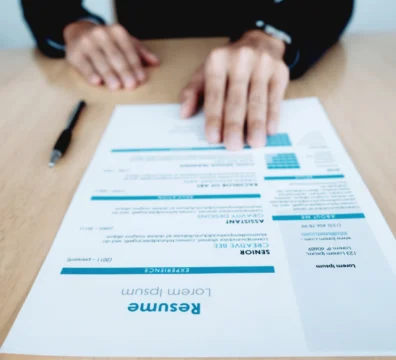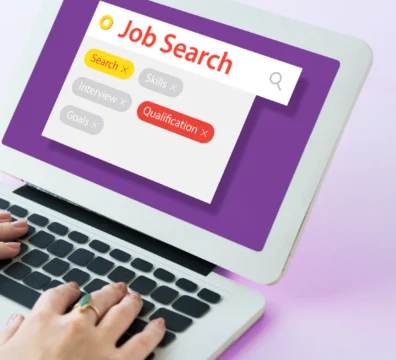Hiring creates a sense of urgency for both the parties involved: Employer and Job seekers. For workers, it is getting the job immediately, starting earning, and settling into their new lives. On the other hand, for employers, it is to fill up a vacancy quickly and ensure good productivity and efficient distribution of resources. Even when the hiring process must be expedited, the average hiring timeline is still over a month.
Different problems can range from logistical issues to difficulties in industry-specific processes and lack of a proper talent pool, impacting the turnaround time from job advertisement to onboarding.
Here we have compiled a few strategies to improve your recruitment process and stay ahead of the hiring marathon.
What is the Average Hiring Timeline?
The hiring timeline of a company can vary depending on several factors, ranging from an inexperienced and messy hiring process, or a shortage of eligible candidates meeting the requirements of the open position. One candidate can finish the process in a few days, while another needs weeks of back and forth.
The average hiring timeline refers to the average time a recruiter takes to hire all their candidates in one go.
Average hiring timeline = individual hiring time of candidates / total number of candidates.
For example, you hired 3 candidates in 15 days, 21 days, and 30 days respectively. The average hiring timeline for your company is ((15+21+30 days)/3)= 22 days.
A Glassdoor research finding says if you are searching for a job in Dubai, it will take you more than a month to get hired or rejected. Their average recruitment process time is 35.8 days.
What is Time-to-Hire and Time-to-Fill?
Time-to-hire is an essential recruitment metric that measures the number of days between candidates applying for a job and accepting an offer.
For example, imagine the day you opened a specific position as Day 1. Then, a candidate applied for the position on Day 10, and they accepted your offer on Day 30. So, your time-to-hire is 30-10 = 20.
Time to hire = Day candidate accepted offer – Day candidate entered the pipeline.
It provides information about two crucial recruitment processes. One is your company’s recruitment efficiency, which includes how a candidate is processed, assessed, interviewed, and accepted for a job. And the other is the candidate’s experience that ensures the company hires the right fit within days without expanding to weeks.
Often employers make a mistake by considering time-to-hire and time-to-fill the same. The average time to hire a new employee differs from the time to fill metrics in the recruitment process.
Time to fill is the number of days between a job requisition and a candidate’s accepting the job offer. It is the time taken by a company to fill a position.
For example, your Day 1 may be the day your hiring manager submits a job opening for approval, HR approves a job opening, or a recruiter advertises the job opening. The ending date is when a candidate accepts your job offer. If the candidate accepts the offer after 30 days of job posting, your time-to-fill is 30.
Why is it Important to Measure the Average Hiring Timeline?
There are numerous reasons why a company needs to measure the average time to recruit an employee, and the notable one is to evaluate companies’ efficiency in the selection process.
Research by Robert Half depicts that nearly 57% of job seekers lose interest in a job when their hiring process is lengthy, and only 23% of candidates will wait for just one week to hear back after an interview.
If your average interview process length is more than your competitors with equal opportunities, chances are high that candidates will hop to them. A longer time to hire negatively affects candidates’ experience leading to frustrations and disengagement with your company and declining job offers.
Additionally, it negatively affects employee productivity as the positions remain unfilled for a long time leading to an increased workload for existing employees.
10 Effective Ways to Improve Your Average Hiring Timeline
A proper hiring process in a company attracts and retains highly qualified employees, and one notable consideration is to improve your average hiring timeline. Here we have shared 10 effective ways to improve your hiring time.
Outline a Structured Hiring Process
Establishing a structured hiring process is essential for businesses to avoid the longer time-to-hire. It may include setting up your recruitment objectives, qualities of your ideal candidate, value proposition and marketing approach, and more.
A structured hiring plan reduces your overall candidate acquisition costs and streamlines the process of finding and qualifying candidates. Additionally, it provides measurable and tangible results to your company by avoiding damages caused by bad recruits.
Enhance Your Job Descriptions
Candidates often scroll tirelessly through different online job boards to find the right openings, and by producing a clear and compelling job description, you can attract these talents efficiently.
Enhancing job descriptions means reducing their length to crisp content clearly stating the requirements, responsibilities, salary ranges, and all other necessary details.
Optimizing Sourcing Channels
By optimizing sourcing channels, recruiters can understand where to begin their search for a specific job position and reach out to a large pool of candidates. Doing so aims to better understand your target applicants, predict where they are mostly available, and find ways to communicate with them smoothly.
Build a Talent Database
You can build a talent database with candidates who have applied for your company positions but were not the right fit at that moment. These applicants may be perfect for your current openings. Additionally, with the remote workforce being the new normal, you can expand your talent pool without any geographical restrictions.
This database can include candidates you have found through in-house referrals, executive searches, leads from events, and recruitment activities.
Develop a Talent Pipeline
By developing a talent pipeline ahead of time, you will have pre-screened candidates for a particular role that reduces your average hiring timeline. It differs from recruitment, as pipeline building is about knowing candidates’ interests and goals to determine if they are the right fit for your company. You can establish a good relationship with these ideal candidates in your pipeline and stay in touch.
Improve Your Career Page
Candidates can visit your company’s career page twice during the hiring process. Once when they learn about your job vacancy, and secondly when they’re considering your job offer. It means your career page needs to be impactful to attract more talent.
Otherwise, if it doesn’t sell your candidates on your job, they will reject your offer and increase your hiring time to look for other candidates.
Collect and Analyze Key Performance Indicators
When it is measuring your average hiring timeline, it is evident that substantial data will be involved. It includes collecting and analyzing your key performance indicators like time to hire, time to fill, response rate, the time between stages, application completion rate, cost per hire, and a few more.
This data serves as a benchmark and helps you determine what approaches you can implement to improve your hiring timeline and reduce costs.
Also Read: 5 Tips to Improve Your Human Resource Employee Relations
Streamline the Interview Process
Have you ever wondered, how long does the hiring process take after an interview? Though the interview process usually takes up the maximum time when hiring, the process after that is no less time-consuming. However, we can reduce the hiring time by filtering strong candidates into the recruitment funnel to reduce the number of interviews you need to schedule. You may also send them an assessment before scheduling an interview to check their competencies for your job.
Use Technology to Fasten Up the Process
Technology can reduce the hiring timeline by eliminating time-consuming and error-prone manual work. You can get an applicant tracking system that automates the HR hiring and onboarding process and assessment software to measure a candidate’s competencies for the job. A few others may include pre-assessment software, candidate screening software, etc.
Improve Communication with Candidates
Job seekers, especially the top candidates, look for personalisation and timely communication today. It urges companies to provide timely updates to each candidate throughout their recruitment and hiring journey. This practice keeps the qualified candidates engaged with your company and thinks twice before they skip to other job offers.
Ultimately, it saves your average recruitment process time in finding new candidates and starting the hiring process from scratch.
How Does 6 Pence Help in Reducing the Average Hiring Timeline?
Recruitment in a company is essential but the most stressful task for HRs. However, the right strategies can save you time and money while finding the best talents on the board. This guide will help you with ten effective strategies to improve your average interview process length, reduce time-to-hire and cost-per-hire, and improve your overall talent acquisition process.
If you are looking for expert recruitment services, contact 6 Pence today! We offer high-quality recruitment and staffing outsourcing solutions to companies in the Middle East, and we are operational in Iraq, Bahrain, Oman, and Dubai.
Our process starts with understanding clients’ organizational values and objectives, creating a strategic plan, filtering candidates through expert technologies, and more.
Our expert recruiters have over 17+ years of experience, a comprehensive database of candidates, and a complete legal framework to help with compliant hiring and adherence to industry, local, and industry labour regulations.
For details, ask us!
Frequently Asked Questions
What is the average hiring timeline?
The average hiring timeline is the sum of all the individual average time of hire for each candidate divided by the sum of the total candidates in the interview.
What are the stages of the hiring process?
There are numerous stages in a hiring process that begin with creating a job announcement and posting on different channels, accepting CVs, conducting a few interviews, assessment tests, background checks, shortlisting candidates, making an offer, negotiating salary and employment terms, and candidates accepting the offer.
How many rounds are there in the interview process?
There are no fixed rounds of interviews during the hiring process. However, for entry-level positions, one interview is enough; for mid-levels, two is sufficient; senior-level interviews are usually three or more rounds.




































































































